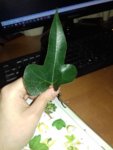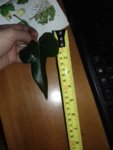MiguelMC
Yamadori
This is a weird request but bear with me, today when i was walking the dog I found an tree that I've never seen before, just a sampling growing in the middle of nowhere, at first glance i thought it be an acer campestre or something like it but the leafs seem a bit too long.
the tree is just a sapling about 1,5m high or so with a base width at about 2/3cm , any ideas of what it is? if you so do you think its worth collecting, I'm sure this will be removed by the municipal services sooner rather than later.
the tree is just a sapling about 1,5m high or so with a base width at about 2/3cm , any ideas of what it is? if you so do you think its worth collecting, I'm sure this will be removed by the municipal services sooner rather than later.




